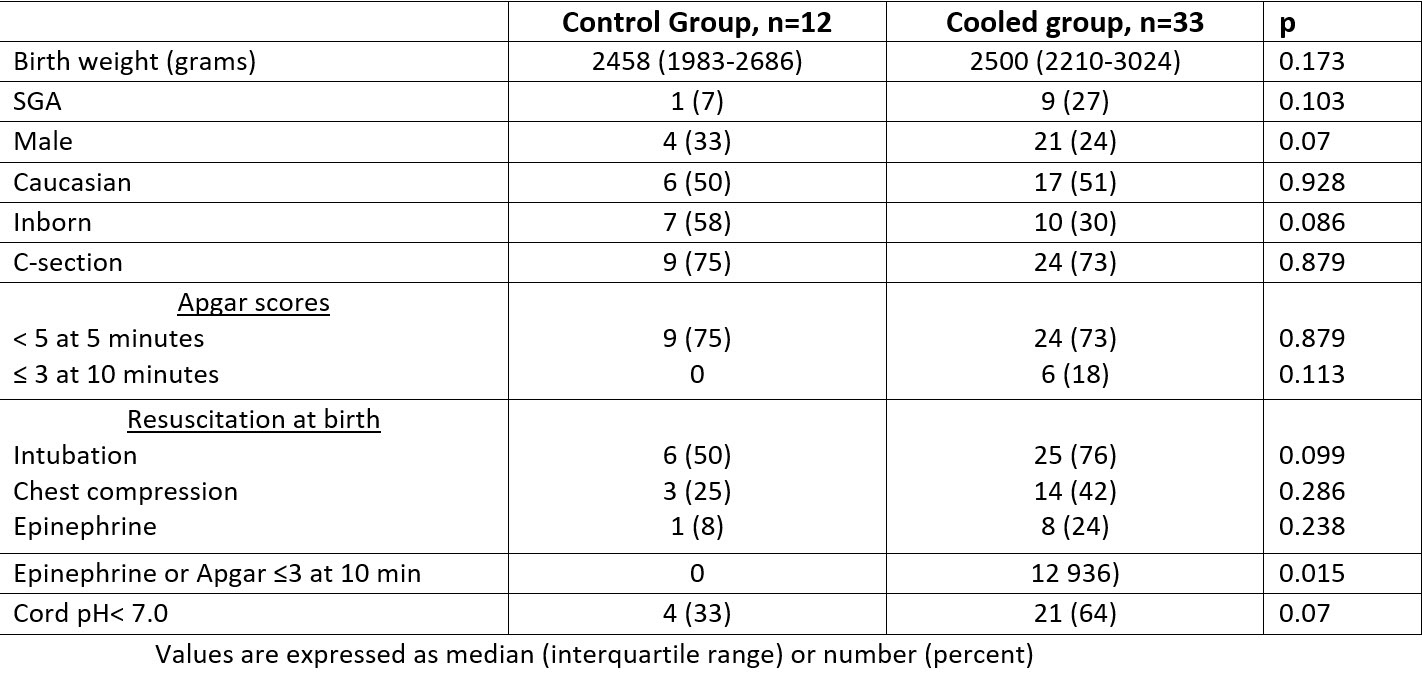Neonatal Neurology: Clinical Research
Neonatal Neurology 4: Clinical 4
105 - Therapeutic hypothermia in Preterm neonates with hypoxic ischemic encephalopathy
Publication Number: 105.336
- RG
Rashmi Gulati, MD (she/her/hers)
Associate Professor,Pediatrics
University of south alabama
Mobile, Alabama, United States
Presenting Author(s)
Background: Therapeutic hypothermia (TH) improves the neurodevelopmental outcome of asphyxiated newborn infants of gestational age (GA) ≥ 36 weeks and birth weight (BW) ≥ 1800 g. In our unit, TH has been applied to asphyxiated preterm infants who meet the criteria for BW but not for GA. Yet, complications that could be associated with TH in asphyxiated preterm infants have not been investigated
Objective: To compare death and complication rates between cooled and non-cooled preterm infants who were depressed at birth (Apgar at 5 minutes ≤5).
Design/Methods:
We retrospectively reviewed charts of preterm newborn infants with a GA of 33-35 weeks whose Apgar scores were ≤5 at 5 minutes of age, born in the last 20 years at our institution. Preterm infants were separated in two groups. The Cooled group (n=33) included infants who were submitted to TH because they met the TOBY study’s cooling criteria for perinatal asphyxia. The Control group (n=12) included infants who were maintained at normal temperature because they did not meet cooling criteria. We compared rates of death or presence of any complications ( defined in Figure 1) between the two groups. In addition, rates of adverse neurological outcomes were also compared between the groups.
Results:
Although basic clinical characteristics such as BW and GA were not different between the groups, infants in the cooled group suffered greater degree of asphyxia than the control group (Table1). A larger proportion of cooled infants were depressed at 10 minutes or required epinephrine at birth (p=0.015)(Table 1) or suffered from seizures (p=0.052) (Table 2). No difference in complication rates or mortality rates were observed between the Cooled or Control group (Figure 1). The control group had mild to no asphyxia and had no neurological abnormalities (Table 2).
Conclusion(s):
In this study, therapeutic hypothermia did not increase mortality or complication rates. Further studies are needed to confirm these findings.

.jpg)
.jpg)
